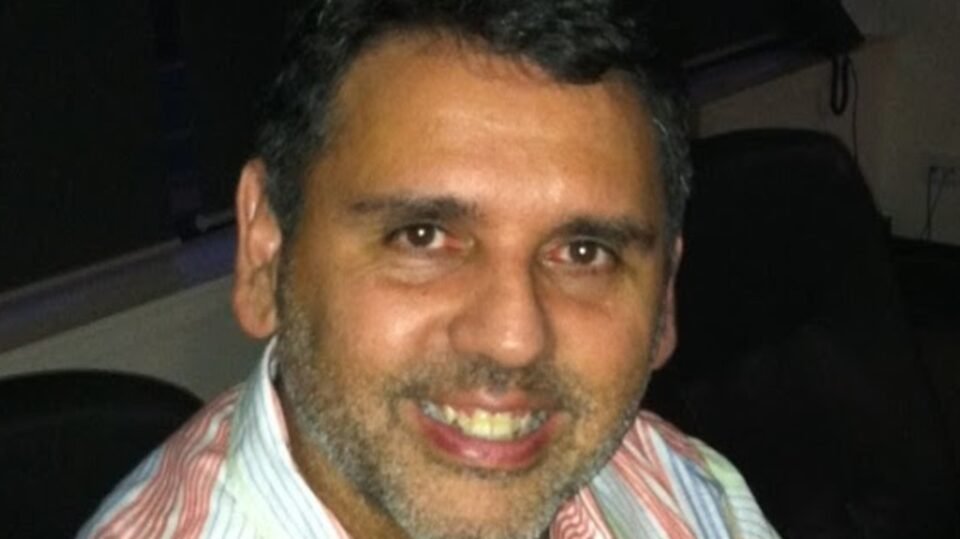Twice-bankrupt mining spruiker David Catsoulis’s failed company Warwick Gold Holdings says it has $13m worth of precious metals on an atoll in the Solomon Islands.
The bad news – potentially – is that the major asset owned by the company is located on a sparsely populated atoll in the Solomon Islands, which doesn’t even appear to boast an airstrip.
How more than $13m worth of “precious metal rods” owned by Warwick Gold ended up on the atoll, which is so small the streets of its village have not even been mapped by Google, remains a mystery for now, with Mr Catsoulis saying on Tuesday he had no idea how the information came to be reported to the corporate regulator.
Warwick Gold, which, Mr Catsoulis has previously claimed, was sitting on more than $2tn worth of precious metals at its former Texas project in Queensland, was placed in liquidation in late February.
As part of the liquidation process, Mr Catsoulis has supplied a “report on company activities and property” to the corporate regulator, setting out the company’s assets and debts.
The company lists more than $20m in assets, including $1m from the revaluation of land it owns, and a $2.6m environmental deposit it says has been lodged with the Queensland Government.
It also lists 40 metric tons of “precious metal rods” located in the Halekekepa Warehouse, Luangiua Village, Ontong Java Atoll, Solomon Islands.
The Australian, which has been reporting on Warwick Gold for the past three years, documenting projects in Australia and Papua New Guinea claimed to be worth billions if not trillions of dollars and promising imminent dividends, is not aware of any business interests the company has in the Solomon Islands.
Gold samples from a Papua New Guinea project operated by one of David Catsoulis’s companies.
A Wikipedia entry on the atoll suggests its population at 2000 or so people, with the local population living on just 12sq km of land, with no mention of any mining activities on the atoll, or any significant economic activity.
The ROCAP says that Warwick Gold is owed more than $2m in unsecured loans, including more than $1m from its own subsidiary Impact Gold, and more than $780,000 from a trust registered to Mr Catsoulis’ home address.
The ROCAP also says the company owes more than $3.6m to a company called Catimel which Mr Catsoulis is the sole director of.
The ROCAP document is signed in a number of places by Mr Catsoulis, however he told The Australian via text message that he was undergoing open heart surgery and “have been kept completely out of the winding up process or ROCAP”.
When subsequently asked why his signature appeared on the document, Mr Catsoulis said in the past couple of weeks he had been presented with many documents and because of his health issues “I have signed them’’.
“Questioning me on their contents is unfair until I have recovered,’’ he said.
Mr Catsoulis went on to say his team is fielding “multiple offers which are ready for the retaking control of Warwick Gold Holdings”.
The ROCAP report lists Mr Catsoulis’ registered business address as a waterfront home on the Gold Coast, which one of his companies owned until that company was placed in administration last year.
The home was sold off in October, however as sources have told The Australian, and a search of property records confirms, the property was bought by Mr Catsoulis’s immediate neighbour, who sources say is allowing him to continue living there.
Warwick Gold itself was in administration for two brief periods last year before going into liquidation in February.
The company, through subsidiary Impact Gold, had been promoting a Papua New Guinea gold project Mr Catsoulis said was worth billions and which would underpin a multi-billion dollar share market listing.
That company, which in 2019 was known as PGL Gold, was at the time spruiking a 200 per cent return inside three weeks for money invested into its PNG gold project.
So for your initial $100,000, you would get $200,000 back almost immediately. “Thereafter, for every 100,000 of the company shares held, investors will receive a minimum of $100,000 per month for the life of the mine (estimated to be between 12/24 months),” a shareholder briefing document states.
Warwick Gold’s focus for the past year or so was the company’s former Texas project in Queensland which it bought from Thomson Resources for just $3.5m, yet was promoting as holding potentially trillions of dollars worth of precious metals.
The tenements for that project were never transferred to Warwick, with the government telling The Australian on a number of occasions that the applications were deficient.
The tenements have since reverted to Thomson Resources.
Mr Catsoulis also told The Australian in February that the Queensland Government backed him “100 per cent” and that he had a meeting set up with Queensland Minister for Resources and Critical Minerals, Scott Stewart.
That was not true. A spokesman for the minister told The Australian at the time that Mr Catsoulis had called the minister’s office subsequent to his conversation with The Australian, but that regardless, no meeting was arranged, and the minister had “no current plans’’ to meet with Mr Catsoulis.
Despite never having the legal right to mine the Texas tenements, Warwick was telling current and potential investors its team had identified more than $2tn worth of silver and precious metals at the site and would start mining before the end of the current quarter.
In one of the investor updates, Mr Catsoulis says the Silverspur project, a “super Ag (silver) deposit’’, would yield $100,000 per tonne of ore when processed.
This translates to $10bn per “block” of ore, with more than 100 of these blocks available, he said in the update.
This brings the total dollar figure to more than $1 trillion from the silver alone.
The liquidator of Warwick Gold Holdings was also contacted for comment.

